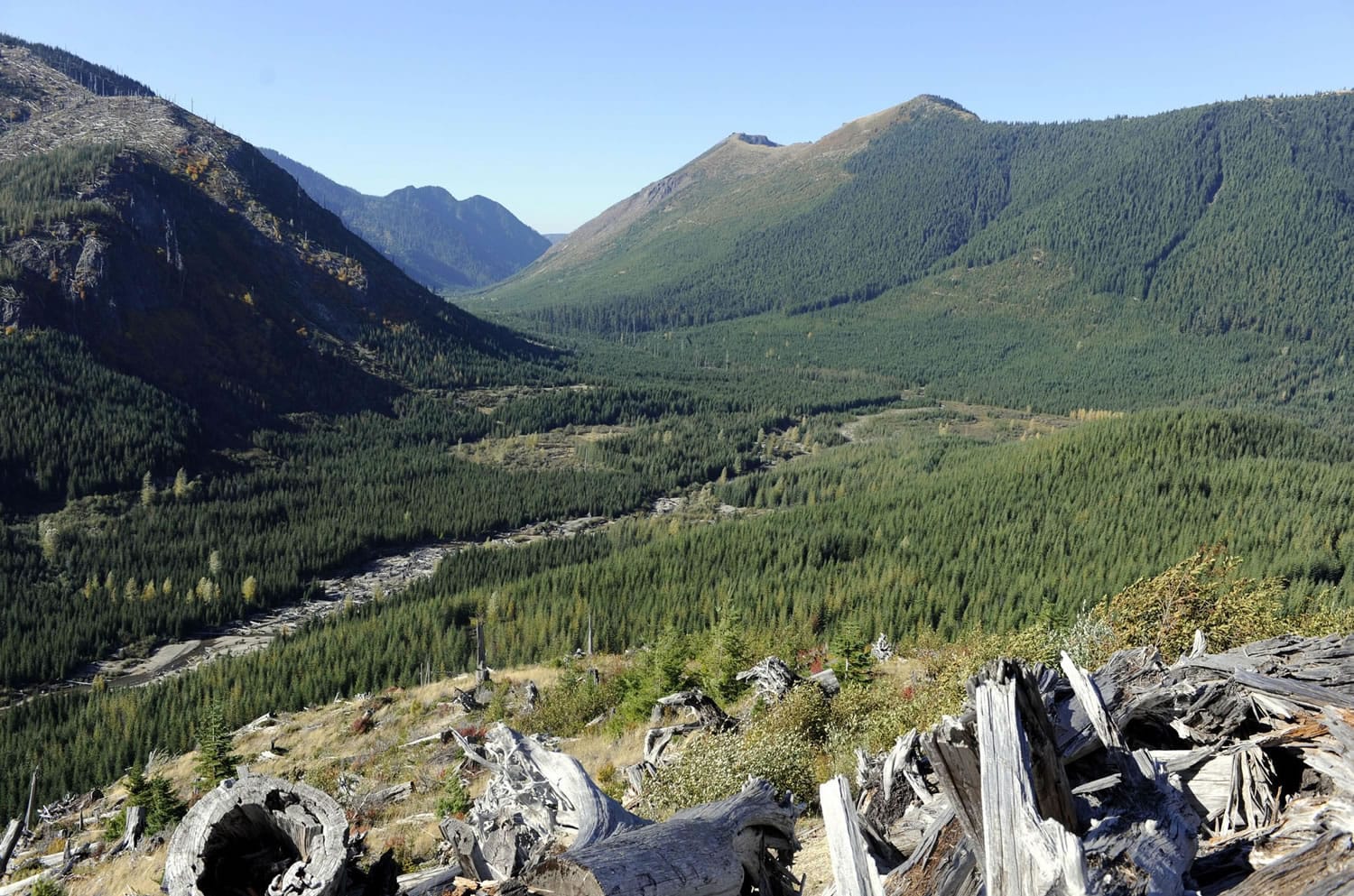RANDLE — On a brilliant fall day, with the maples and cottonwoods beginning to turn, a deep quiet settled over a remote section of the Gifford Pinchot National Forest on the northwest edge of the Mount St. Helens National Volcanic Monument.
South of this depressed timber town, in the Green River watershed, the legacy of the volcano’s 1980 eruption is written on the hillsides.
Within the monument’s boundary, where shattered forests have been left to recover on nature’s timetable, dead trees lie scattered like silver matchsticks across steep slopes. Outside the monument, a plantation of vigorous young conifers bristles with new growth. Where private land borders the Gifford Pinchot National Forest, a fresh clear-cut has laid a mountainside bare.
It’s hard to imagine that this remote backcountry, below Goat Mountain and just 12 miles northeast of the volcano’s crater on the fringe of the blast zone, could one day be the site of a large copper mine.



